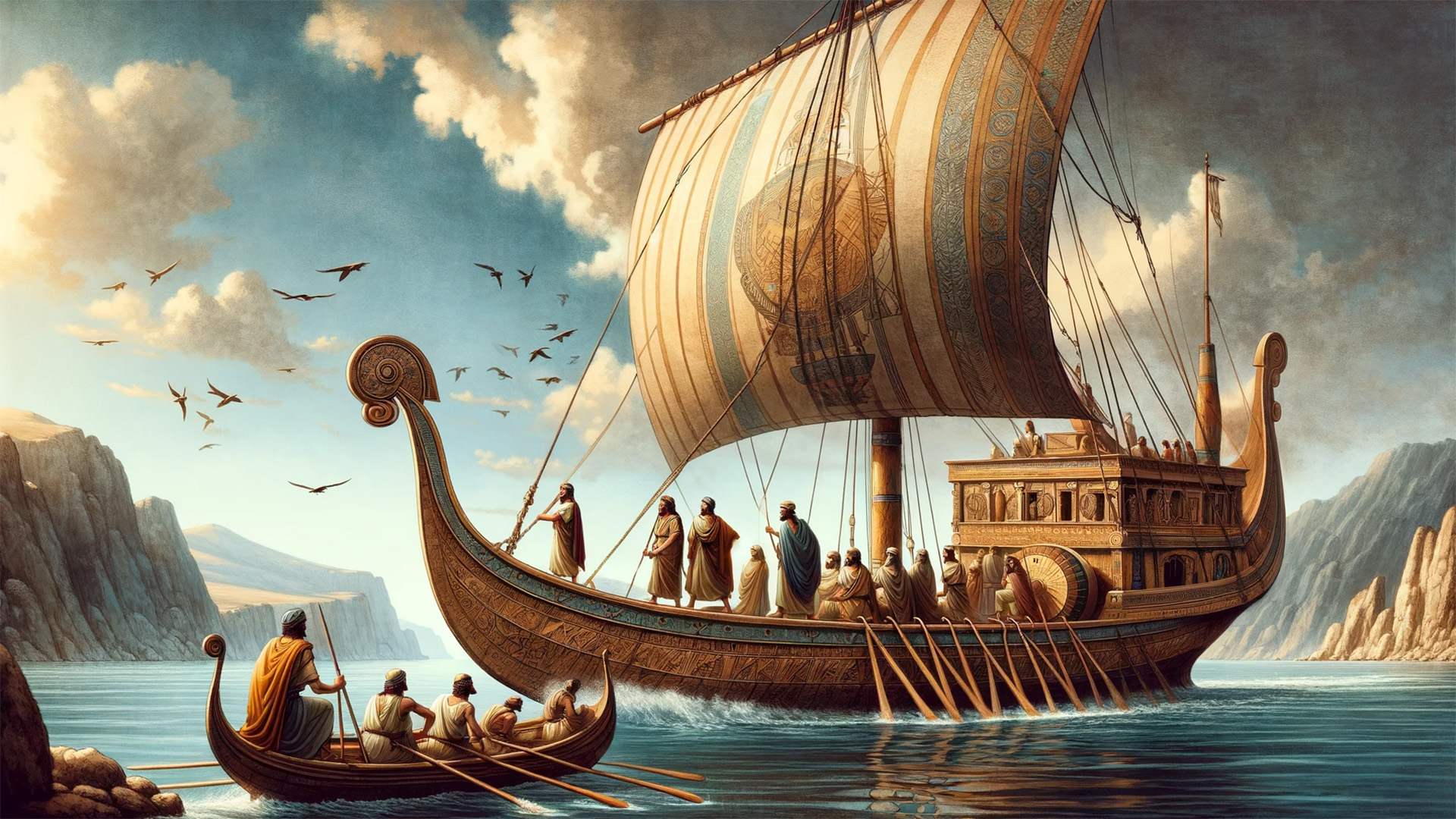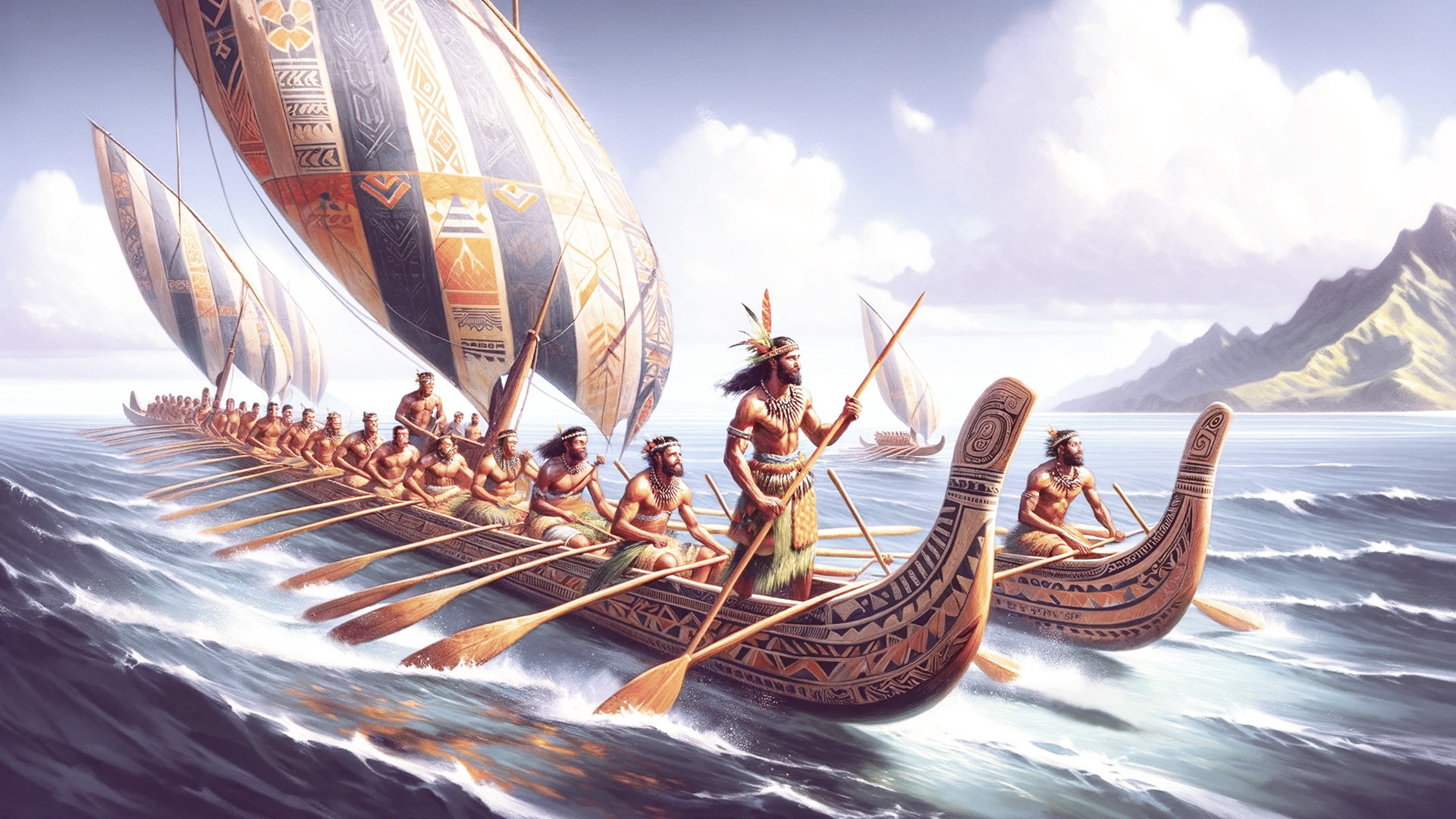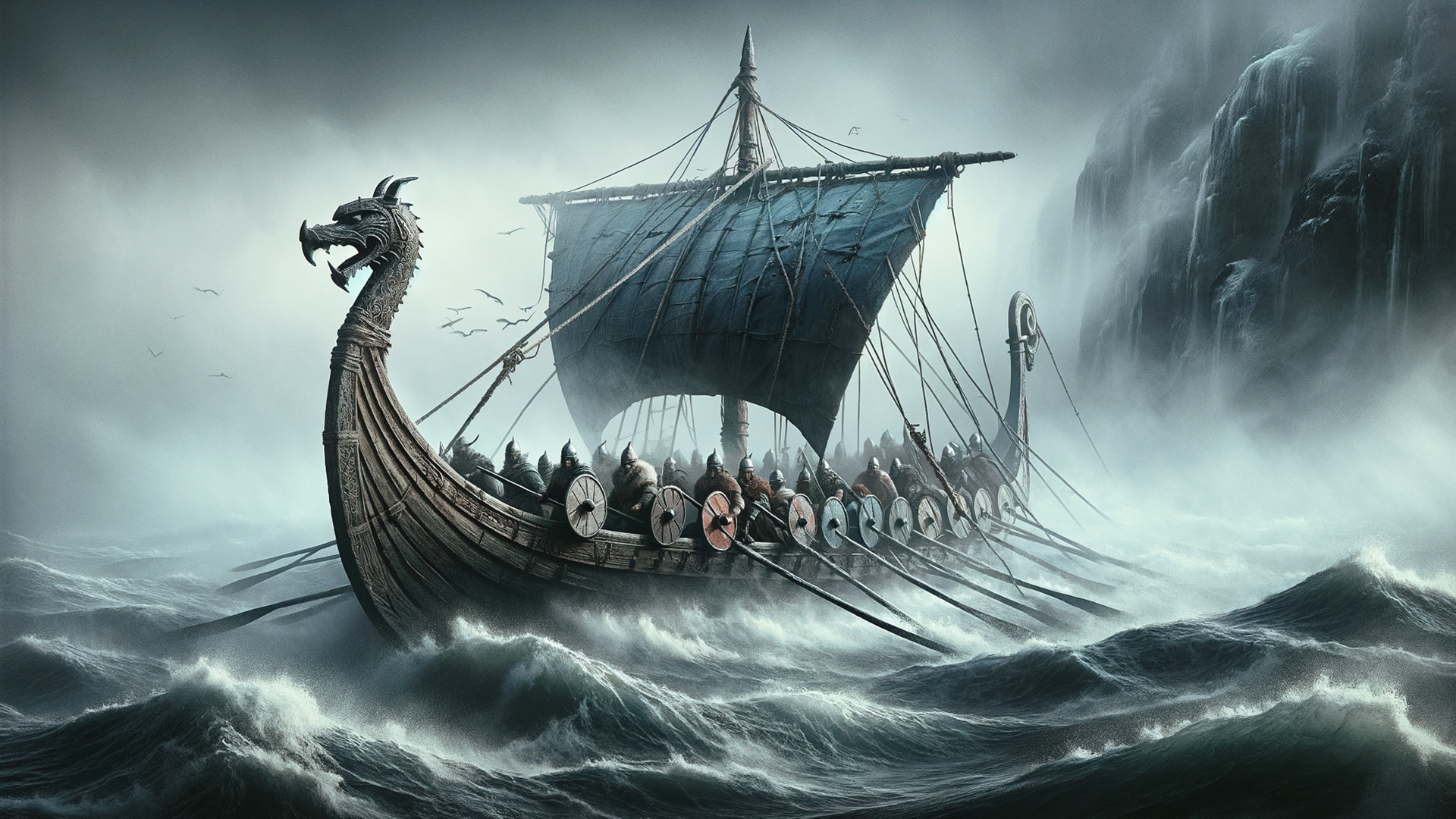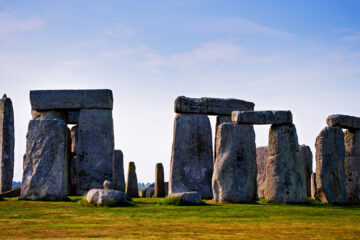
Navigating the Uncharted: Untold Stories of the Ancient Mariners and their Explorations
In the chronicles of human history, the tales of ancient navigation and exploration stand as evidence of our innate quest for discovery. This age-old odyssey, weaving through the fabric of time, recounts the audacious journeys of pioneering mariners who, armed with rudimentary instruments and guided by the celestial bodies, charted courses across uncharted waters. Their ventures, fraught with peril yet driven by an insatiable thirst for the unknown, laid the groundwork for the interconnected world we know today. These explorers, harnessing the raw elements of nature and human ingenuity, not only expanded geographical horizons but also bridged diverse cultures, leaving an indelible mark on the records of global history.
The Seafaring Footprints of the Ancient Phoenicians

In maritime history, the ancient Phoenicians emerged as the quintessential seafarers, whose mastery of naval exploration set the cornerstone for nautical navigation. These ancient mariners, hailing from the coastal regions of modern-day Lebanon, harnessed a confluence of innovative technologies and traditional techniques to traverse the vast and unforgiving Mediterranean Sea.
The Phoenicians, renowned for their seafaring skills, embarked on oceanic voyages as early as 1500 BCE. Their primary motivation, driven by the demand for trade and commerce, spurred them to navigate across dangerous waters, reaching as far as the British Isles in the west and the shores of Africa in the south. The backbone of their maritime prowess lay in the construction of their ships. Built from the resilient cedars of Lebanon, these vessels were both sturdy and elegant, designed to withstand the erratic nature of the sea. Their ships, equipped with a single square sail and oars, embodied their era’s pinnacle of shipbuilding technology.
Their profound understanding of celestial bodies was central to the Phoenicians’ navigational success. They were adept in celestial navigation, using the stars as their guide. The North Star, or Stella Maris, was a constant beacon for these ancient navigators. By observing the position of this star, they could determine their latitude, a technique that remained unrivalled until the advent of the sextant in the 18th century.
In addition to celestial navigation, the Phoenicians also developed an intimate knowledge of coastal landmarks and sea currents. They charted their routes along coastlines before venturing into the open sea, using prominent features such as cliffs, bays, and the colour of the sea bed to guide them. This knowledge was closely guarded, passed down orally from generation to generation, shrouding their navigational techniques in a veil of secrecy that further mystified their maritime capabilities. Another key aspect of Phoenician navigation was their use of rudimentary yet effective tools. They utilized a primitive form of a compass, likely made of a piece of magnetized iron floating in water. While less accurate than the magnetic compasses of later civilizations, this tool provided a rudimentary sense of direction, essential for long voyages.
The legacy of the Phoenician navigators is profound. Their voyages facilitated the exchange of goods and ideas, cultures, and knowledge, significantly contributing to the cultural and intellectual development of the ancient Mediterranean world. They established trade networks and founded colonies, and in their quest for new markets and resources, they inadvertently charted the course of early globalization.
The Pacific Navigational Secrets of the Ancient Polynesians

The ancient Polynesian navigation is a remarkable saga of human ingenuity and resilience. It chronicles the journey of a civilization that successfully traversed the vast and unpredictable Pacific Ocean without the modern conveniences of compasses or devices. These intrepid navigators, hailing from a constellation of islands in the Pacific, developed a deep understanding of nature’s cues and crafted ingenious techniques to voyage across thousands of miles of open water. At the heart of Polynesian navigation lay an intimate knowledge of the stars. These seafarers, adept in the art of celestial navigation, charted their courses by the sun, moon, and stars. They recognized the patterns of the night sky, using them as a celestial map to guide their voyages. The star compass, a conceptual tool comprising rising and setting points of stars along the horizon, was crucial in maintaining their course across the open sea.
In addition to celestial navigation, the Polynesians were attuned to the subtle cues of the environment. They observed the movement of ocean currents and waves, understanding that these patterns could provide critical information about the direction and proximity of islands. The feel of the ocean swells, the colour of the water, and the presence of specific types of birds and marine life all served as vital navigational aids. The construction of their voyaging canoes also played a pivotal role. These vessels, known as ‘va’a’ or ‘waka,’ were feats of ancient engineering. Crafted from hollowed-out tree trunks and lashed with natural fibres, they were sturdy and seaworthy. The Polynesians also developed the outrigger canoe, which provided stability in rough ocean waters, making long voyages more feasible.
Oral tradition was central to the transmission of nautical knowledge. Without written records, this knowledge was passed down through generations through chants and stories, which encoded information about star paths, ocean behaviour, and environmental indicators. These oral maps were as crucial to a navigator as any physical map. The Polynesians’ navigational skills enabled them to discover and settle the vast expanse of the Pacific Islands, from New Zealand in the southwest to Easter Island in the southeast and Hawaii in the north. This incredible feat, achieved over several centuries, is a tribute to their deep understanding of the natural world and their ability to adapt and innovate. Their legacy is not just a tale of exploration and discovery but a narrative of human resilience and the extraordinary capability to harness the power of nature’s elements for navigation.
Sailing Through Mists: The Naval Mastery of the Vikings

The Vikings hold a prominent place as formidable seafarers who navigated the treacherous waters of the North Atlantic with an uncanny precision that continues to fascinate historians and mariners alike. Hailing from the rugged fjords of Scandinavia, these Norse explorers, traders, and warriors embarked on journeys that extended from the coasts of North America in the west to the distant reaches of the Caspian Sea in the east, conquering the seas with their unparalleled nautical skills.
The core of Viking navigation lay in their astute observation of the natural world. Unlike their Mediterranean counterparts, the Vikings often sailed in regions where the sun rarely shone, making celestial navigation less reliable. Instead, they developed a keen understanding of the wind and weather patterns and relied heavily on the direction of prevailing winds. Their sagas speak of “sunstones,” a type of mineral believed to aid in determining the sun’s position even on overcast days. However, the exact nature of these stones remains debated among scholars.
Another crucial element in Viking navigation was their intimate knowledge of landmarks, currents, tides, and the colour of the sea. Coastal navigation was predominant, with landmarks passed down in oral sagas and songs. The Vikings also observed the migration patterns of birds and marine life, which could indicate the proximity of land. Additionally, they were attentive to the sea swell patterns, which could be altered by nearby land masses, guiding them in the right direction.
The Viking longships were marvels of naval engineering, designed for both speed and versatility. Their shallow draft allowed for navigation in both open seas and shallow rivers, while the symmetrical bow and stern design enabled them to reverse direction quickly without turning around. The ships were primarily powered by a large square sail and supplemented by oars, allowing for efficient travel in diverse weather conditions.
One of the most intriguing aspects of Viking navigation was their use of the “Viking Sun Compass.” While the existence of such a compass is still debated, archaeological finds suggest that they may have used a disk-like instrument to determine the cardinal directions based on the shadow cast by the sun. This tool would have been particularly useful during the long summer days in the Scandinavian latitudes.
The Vikings’ voyages were not merely conquests but also expeditions of exploration and trade. They established trade routes connecting different cultures and economies, from the Byzantine Empire to the British Isles, thereby playing a crucial role in the economic and cultural exchange of the early medieval period. With their deep understanding of the natural environment, innovative shipbuilding skills, and navigational techniques, they mastered the art of sailing in some of the world’s most challenging waters. Their legacy as seafarers is a testament to human resilience and adaptability, showcasing how ancient civilizations harnessed and responded to the forces of nature to explore the unknown.
References:
- The Sea Traders by M.E. Charlesworth – offers an in-depth information about the Phoenicians role as master seafarers and traders in the ancient Mediterranean world. The author also covered their expertise in advanced maritime technology, shipbuilding techniques and celestial navigation. This literary work also provide details on their extensive trade networks, cultural impact, and the legacy they left behind in the realm of ancient seafaring.
- Stars and Sails: An Odyssey in the Ancient Mediterranean by Dr. Helen Jacobus – a fascinating study of ancient celestial navigation with a focus on the Phoenician mariners. The book provides a detailed analysis of how these ancient navigators used the stars and other celestial bodies for sea voyaging, the archaeological and historical evidence supporting these findings, offering a vivid picture of Phoenician exploration and its significance in the development of maritime navigation.
- Navigating the Pacific: The Art of Polynesian Seafaring by Samuel Thompson – provides an in-depth look at the remarkable navigational techniques of the ancient Polynesians, the various methods these navigators used, including celestial navigation, reading ocean currents and swells, and interpreting environmental signs. The author detailed the design and construction of their iconic voyaging canoes and the cultural significance of their seafaring traditions.
- Stars, Waves, and Islands: The Pacific Navigation Secrets of the Ancient Polynesians by Dr. Linda A. Henkel – a comprehensive study that examines the sophisticated navigation methods of the ancient Polynesians highlighting how they used stars, ocean patterns, and wildlife behaviors to traverse vast ocean distances. It also discusses the importance of oral traditions in preserving this knowledge across generations and the impact of these navigational skills on the settlement of the Pacific islands.
- Viking Voyages: Winds of Change by Erik Anderson – a detailed exploration of the Viking’s maritime journeys, focusing on their advanced navigation techniques and shipbuilding skills. The book also explains on how the Vikings utilized natural phenomena like wind patterns and celestial bodies, as well as their innovative use of sunstones and the Viking Sun Compass. Furthermore, it also provides information about the construction and functionality of the iconic Viking longships and their impact on the Viking’s ability to explore and trade across vast distances.
- Norse Navigators: Masters of the North Atlantic by Dr. Ingrid Larsen – this literary work provides an insightful look into the navigational methods and maritime culture of the Vikings, their reliance on oral tradition for navigation, their understanding of ocean currents and tides, and the role of environmental cues in their seafaring.









